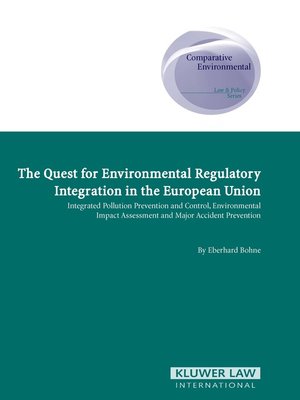The Quest for Environmental Regulatory Integration in the European Union
ebook ∣ Integrated Pollution Prevention and Control, Environmental Impact Assessment and Major Accident Prevention · Comparative Environmental Law and Policy Series Set
By Eberhard Bohne

Sign up to save your library
With an OverDrive account, you can save your favorite libraries for at-a-glance information about availability. Find out more about OverDrive accounts.
Find this title in Libby, the library reading app by OverDrive.



Search for a digital library with this title
Title found at these libraries:
| Library Name | Distance |
|---|---|
| Loading... |
Offering an in-depth study of the transposition and implementation of EC environmental directives in eight EU member states (Denmark, France, Germany, Italy, the Netherlands, Spain, Sweden, and the United Kingdom), the author who has played a significant role in the formulation of environmental legislation and regulation at both the national (German) and EU levels¿provides a stable base for an assessment of the benefits and costs of the integrated approach to environmental protection. Among the factors considered are the following:
The empirical part of Dr Bohne's analysis draws on 138 expert interviews with public and private actors, a survey of 178 public authorities, and document analyses of selected industrial permits and environmental impact statements. His comparative analysis of procedural, organizational, and substantive integration makes it possible to identify and compare national accomplishments in regulatory integration, and offers new insights into the effectiveness and limits of EC law. The study concludes with a discussion of the implications of the findings for European governance and better regulation after the enlargement of the EU.
This thoroughly researched, rigorous, and insightful study will be of great interest and value to policymakers, regulators, business people, environmental NGOs, consultants, and lawyers, as well as to students of environmental policies and European governance.







